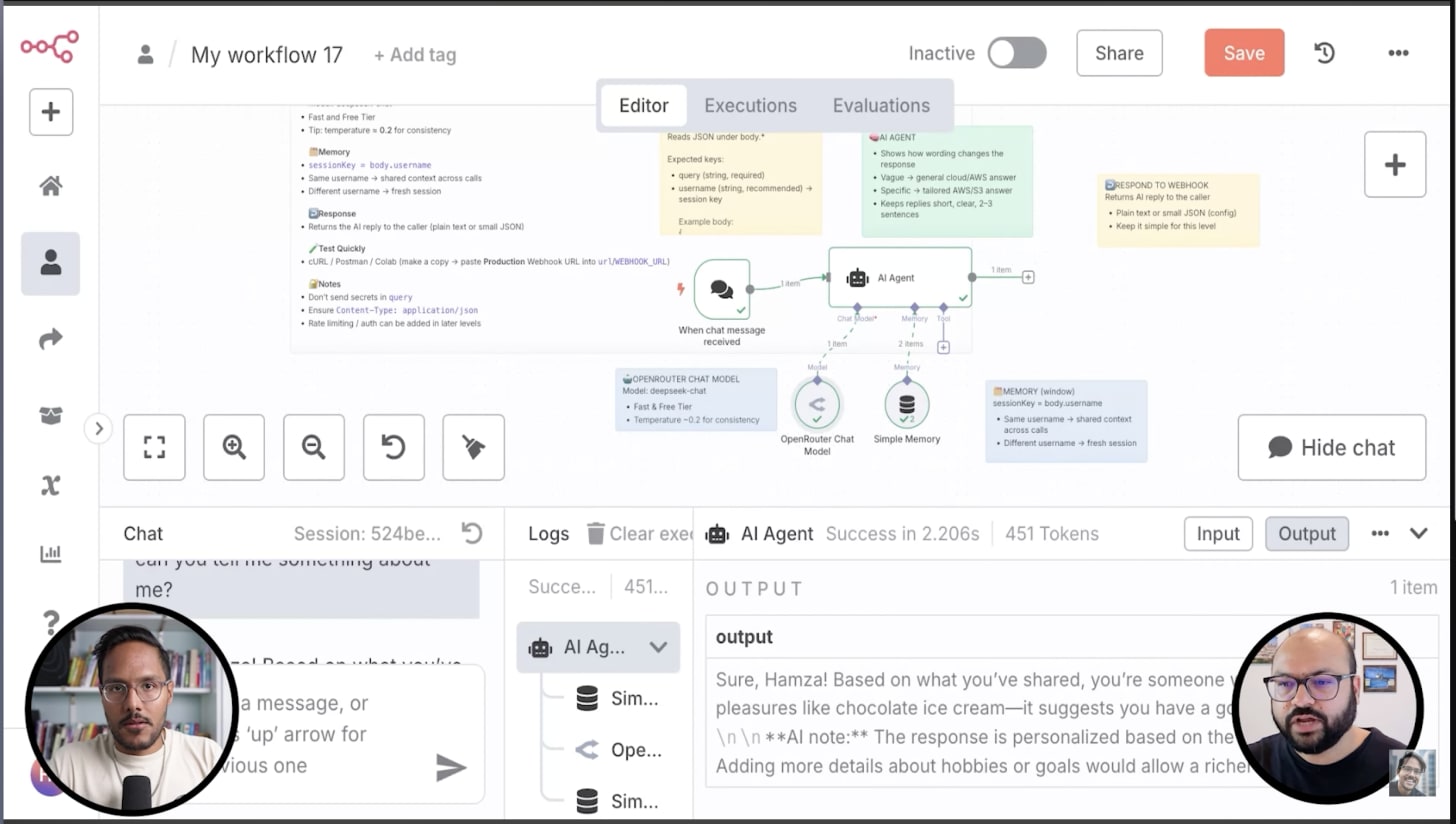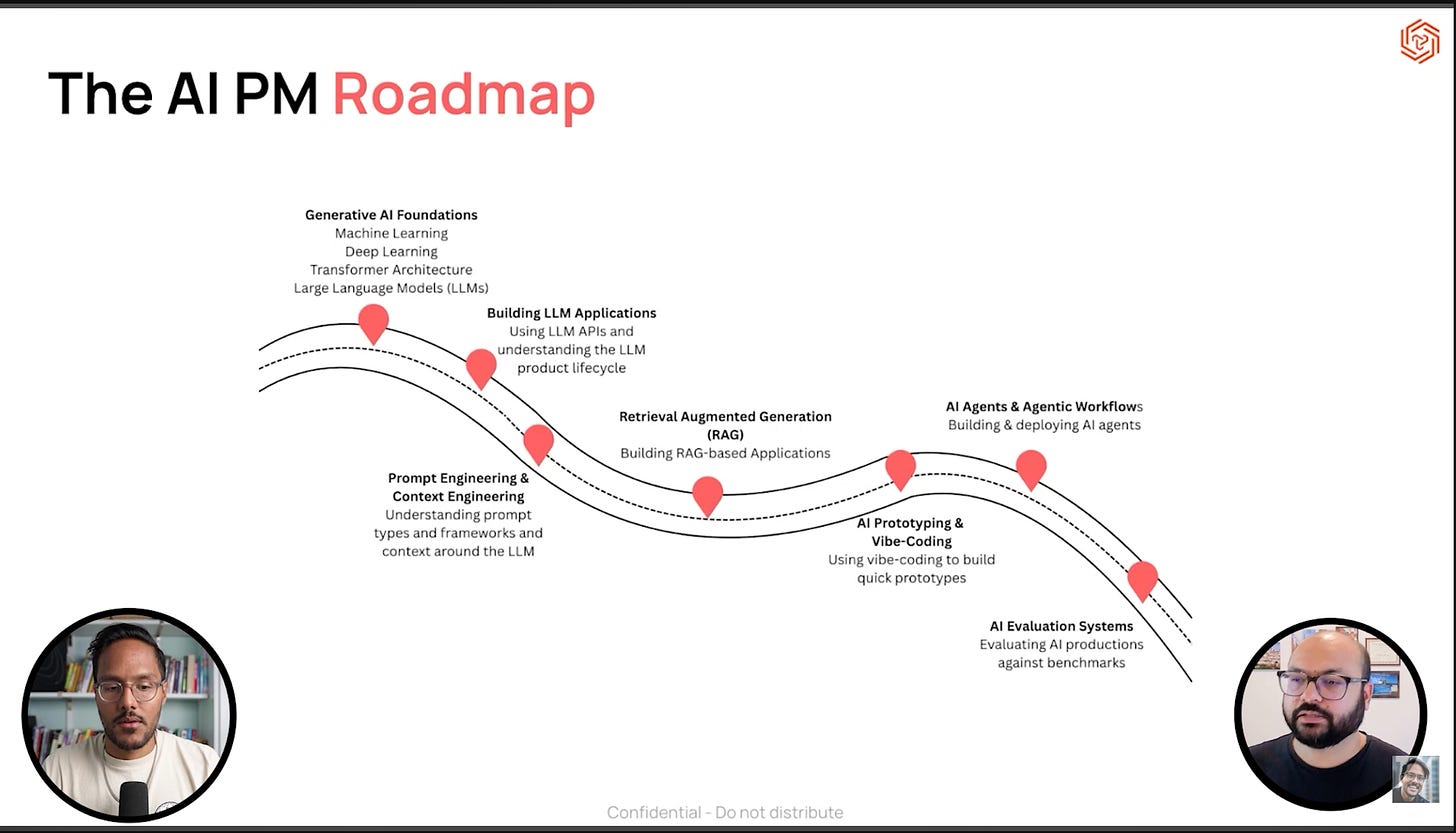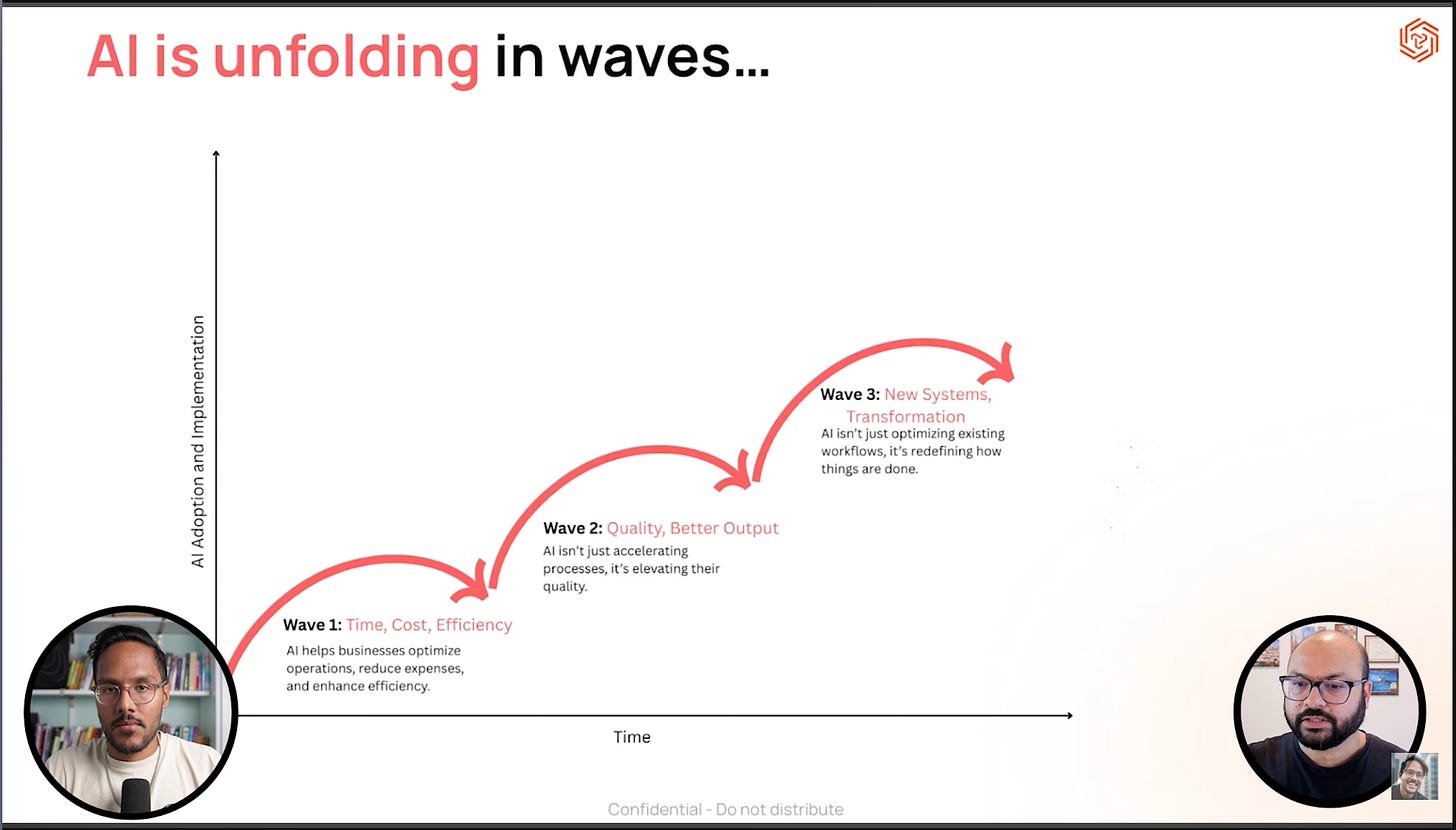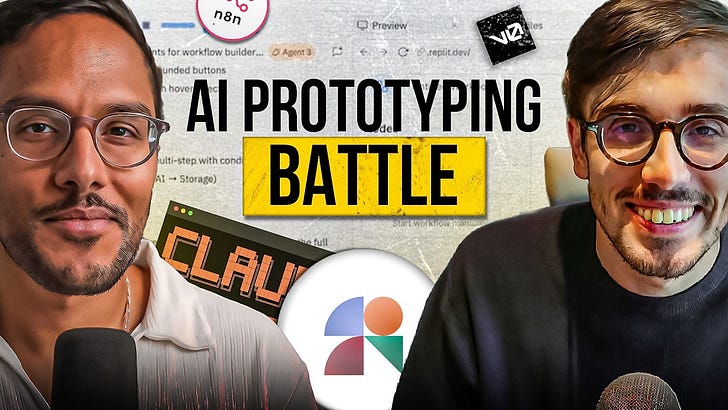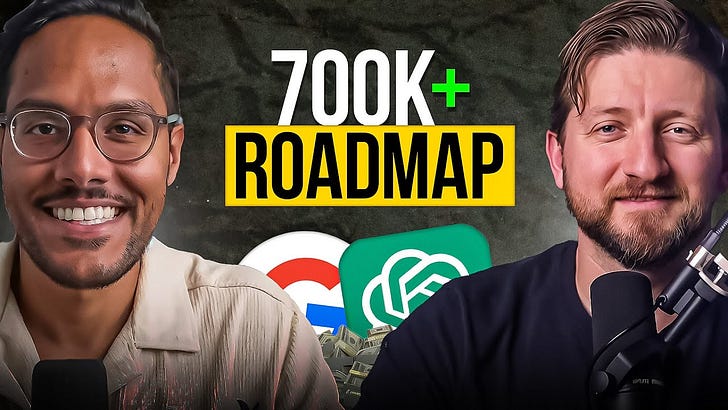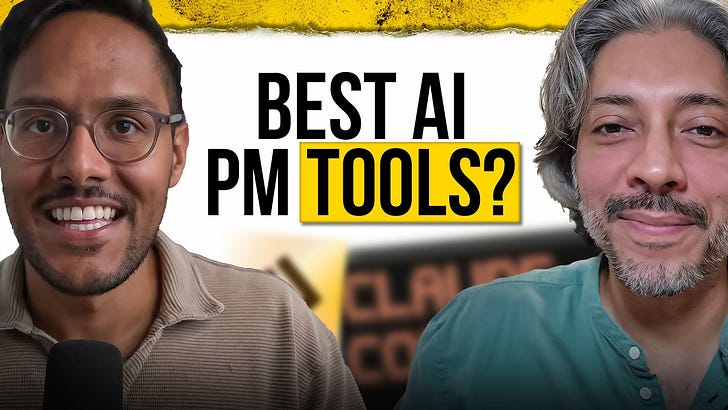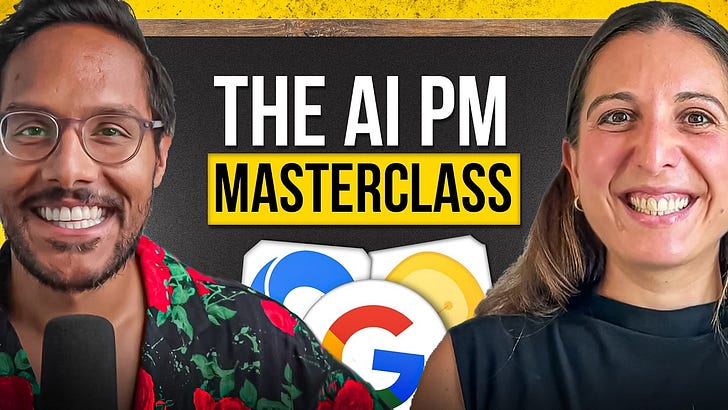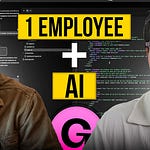Check out the conversation on Apple, Spotify and YouTube.
Brought to you by:
Maven: Get $ off Hamza’s course with my code AAKASHxMAVEN
Amplitude: The market-leader in product analytics
NayaOne: Airgapped cloud-agnostic sandbox
Kameleoon: Leading AI experimentation platform
Today’s Episode
The salary for AI PMs is skyrocketing.
And Hamza Farooq thinks this is the best time to become an AI PM.
Today, he’s giving you the complete 6-month roadmap to go from no experience to PM at OpenAI or Anthropic.
This is the guy who teaches AI PM courses at Stanford, UCLA, and Maven.
And today he’s dropping all the knowledge for free.
You don’t want to miss him building a live AI prototype in 30 minutes (with RAG and agents working) and breaking down the exact technical skills you need to master:
Your Newsletter Subscriber Bonus
For subscribers, for each episode I also write up a newsletter version of the podcast. Thank you for having me in your inbox.
Today’s guide covers:
The Live Build: Lovable + n8n + RAG in 30 Minutes
The 3 Technical Skills AI PMs Must Know
The 6-Month Roadmap
1. The Live Build: Lovable + n8n + RAG in 30 Minutes
We didn’t just talk theory. We built a working AI prototype live.
1a. What We Built
Within 30 minutes, we built:
Lovable for the front-end interface
n8n for workflow automation
RAG connected and working
This is the power of modern AI PM tools. What used to take days now takes minutes.
1b. The Build-First Mentality
Don’t just study frameworks. Build actual prototypes.
Instead of just following the roadmap ‘oh I need to learn tools,’ you saw in within 30 minutes we were able to build lovable connected to n8n and have rag working right in front of us. That’s what you need to do. You need to keep building things.
- Hamza
1c. Real-World Application: Traversaal.ai
Hamza applies this build-first approach in his company Traversaal.ai.
Example: A manufacturer building cardboard boxes for Amazon had zero data scientists and zero insights. They were always reactive.
Traversal built an army of agents that process 20,000 SKUs at a daily level, providing demand forecasts for 1 week, 14 days, and 3 weeks out.
Results: Better inventory optimization, better planning, cost savings on raw materials.
They work with Jack in the Box, Home Depot, and manufacturers across the US.
2. The 3 Technical Skills AI PMs Must Know
Previously, you didn’t need to know the technical details. Now you have to be a jack of all trades.
2a. Context Engineering (More Important Than Prompt Engineering)
Prompt engineering is what you tell an LLM.
Context engineering is how you design the instructions for your LLM.
Here’s what you combine:
System prompt - Your base instructions
User prompt - The specific request
Memory - Past interactions (long-term memory)
RAG - Relevant information from your knowledge base
Context engineering is extremely important, more important than prompt engineering now, because you have to combine multiple levels of things at the same time.
- Hamza
Why it matters: Context engineering enables personalization. The LLM understands each user based on their specific information.
2b. Fine-Tuning (Task Adaptation)
Fine-tuning is all about task adaptation. You want the LLM to produce specific outputs, not general responses.
Example 1: You want the LLM to only produce Python code with best practices. Fine-tune it on 10,000+ examples of great Python code.
Example 2: You work for a pharma company. You want the LLM to remember your vocabulary (acronyms, product names). Fine-tune for vocabulary.
Key distinction:
Fine-tuning = Adding new vocabulary (new words)
RAG = Adding new knowledge (new information)
2c. RAG (Retrieval Augmented Generation)
RAG pulls relevant information from your knowledge base and feeds it into the LLM.
When to use RAG vs fine-tuning:
RAG: For adding knowledge that changes frequently
Fine-tuning: For adding vocabulary or specialized response patterns
3. The 6-Month Roadmap: From Zero to OpenAI PM
Can somebody without experience become an AI PM? Yes. Here’s how.
3a. The Basic Architecture You Need to Know
Step 1: Understand what LLMs are
Step 2: Learn how to build applications
Step 3: Master prompt engineering
Step 4: Implement RAG systems
Step 5: Build agentic systems
You have to learn by doing things. The best way is to keep building things.
- Hamza
Follow this roadmap over and over until you start to feel: “I am making sense and this is how you do it.”
3b. What Should I Build? The Three-Wave Approach
Wave 1: Save Time (Efficiency & Productivity)
Build something that does the exact same thing, just faster.
Example: A summarizer that gives you conversation highlights and action steps from all your daily meetings.
Wave 2: Better Quality (Better Output)
Build something that improves the result.
Example: An AI agent that takes your video, slices it into different parts, and makes a trailer.
Wave 3: Completely New (Novel Capabilities)
Build something that wasn’t possible before.
Example: An AI that builds a prototype recording with AI agents acting like humans, records the video, and publishes it to YouTube.
Where to Find Hamza Farooq
Related Content
Podcasts:
Newsletters:
PS. Please subscribe on YouTube and follow on Apple & Spotify. It helps!


